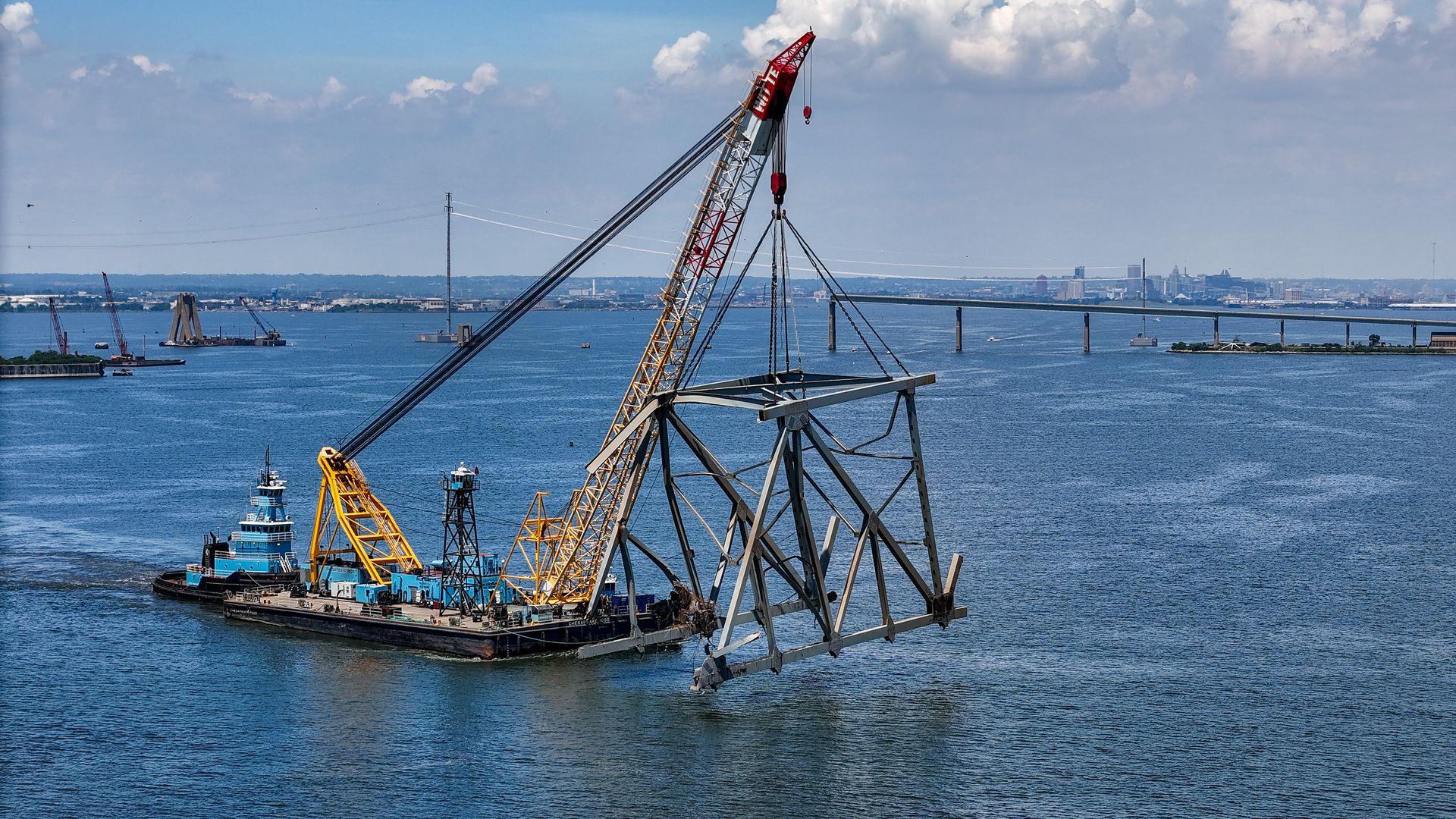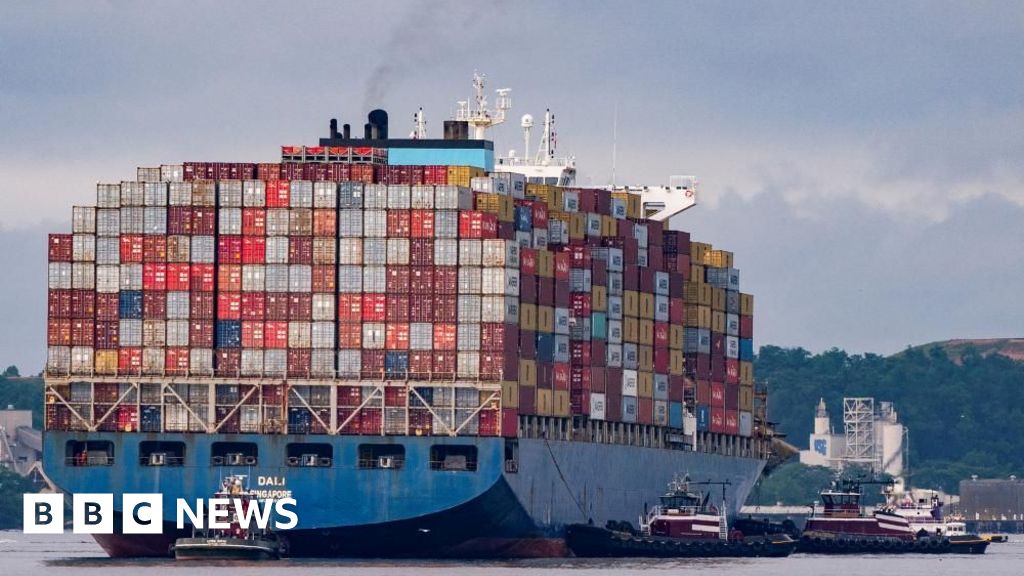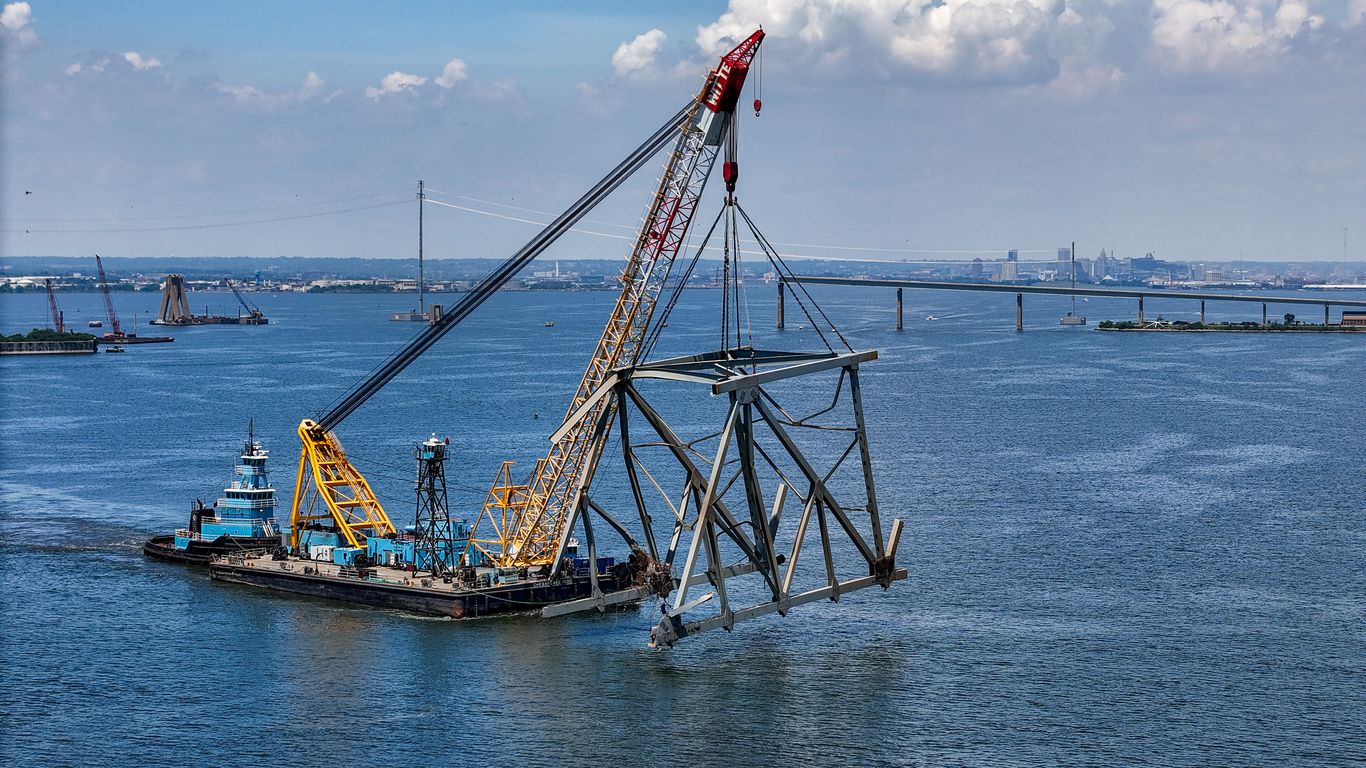
After a long and arduous cleanup effort, the main shipping channel to the Port of Baltimore has finally been fully reopened. The channel had been blocked since March 26, when the container ship Dali lost power and crashed into one of the support piers of the Francis Scott Key Bridge, causing its collapse and killing six workers.
The bridge collapse disrupted shipping traffic in Baltimore, which is one of the busiest ports in the US. The economic impact was estimated to be around $1.2 billion by Anirban Basu, an economist with Sage Policy Group.
Despite the challenges, authorities were able to restore the federal channel to its original 700-foot width and 50-foot depth in just eleven weeks. This was a remarkable feat considering that Maryland Governor Wes Moore had initially estimated that it could take six months to a year.
The Dali container ship, which caused the collapse, was lodged in the channel for nearly two months along with 50,000 tons of debris from the bridge. The Army Corps of Engineers and other agencies worked tirelessly to remove this debris and clear the way for safe transit.
Colonel Estee Pinchasin, Baltimore district commander of the Army Corps of Engineers, announced on Monday evening that the channel had been certified as safe for transit following a survey by the Key Bridge Response Unified Command team. The removal of wreckage at the 50-foot mud-line will continue to ensure future dredging operations are not impacted.
The economic recovery of Baltimore and its port is now underway, but rebuilding the Francis Scott Key Bridge remains a priority.




